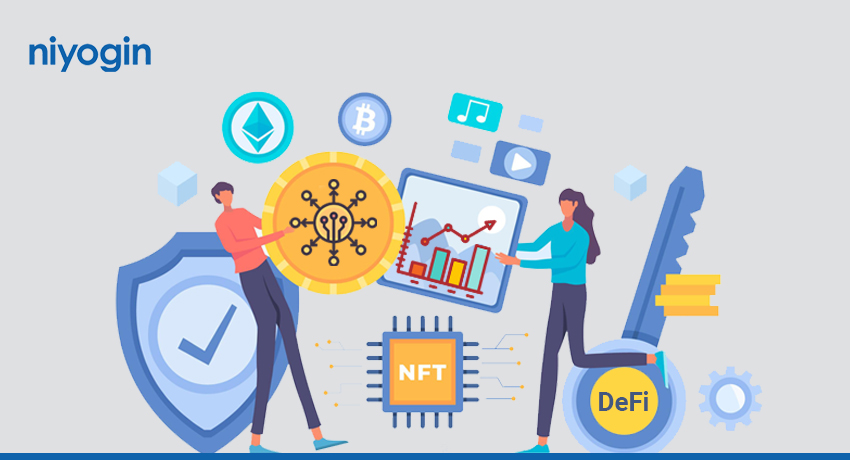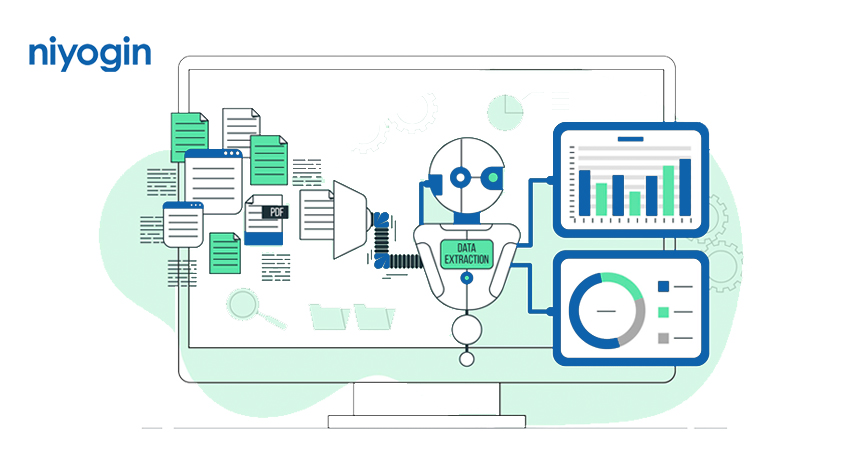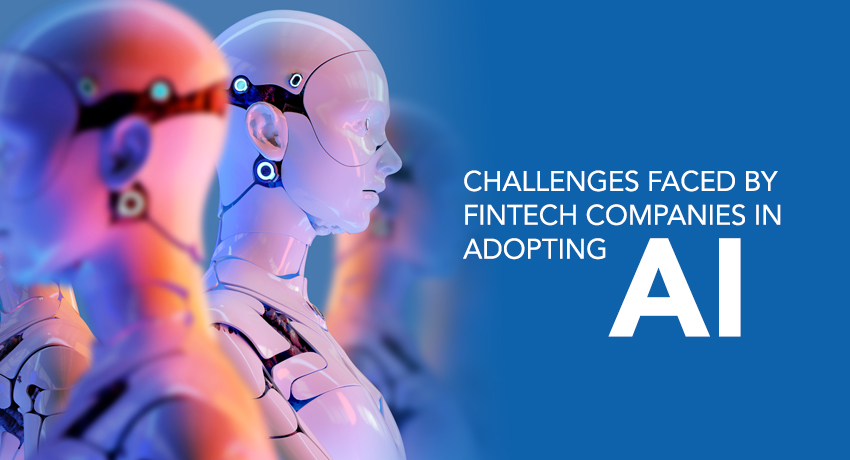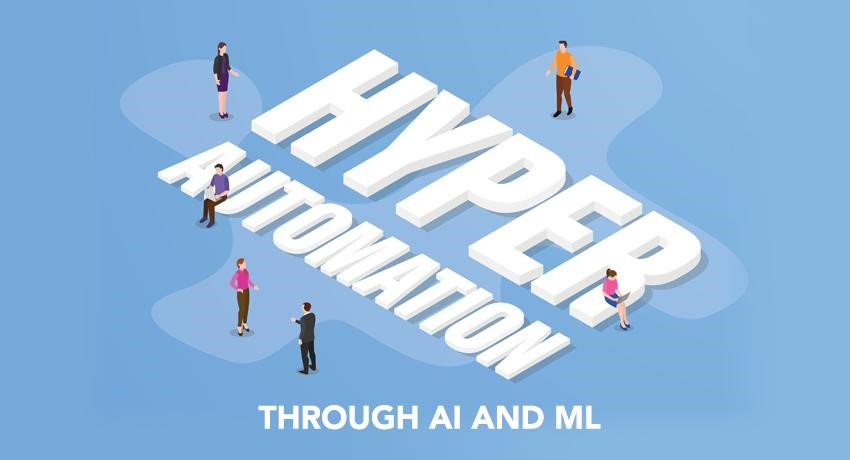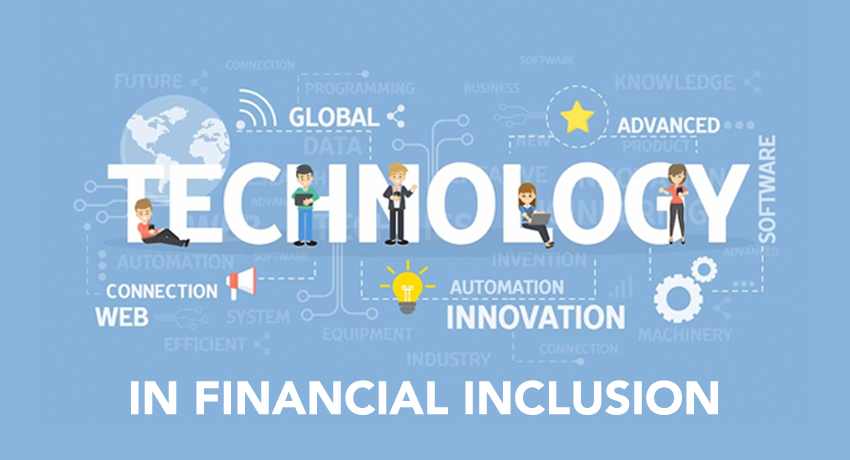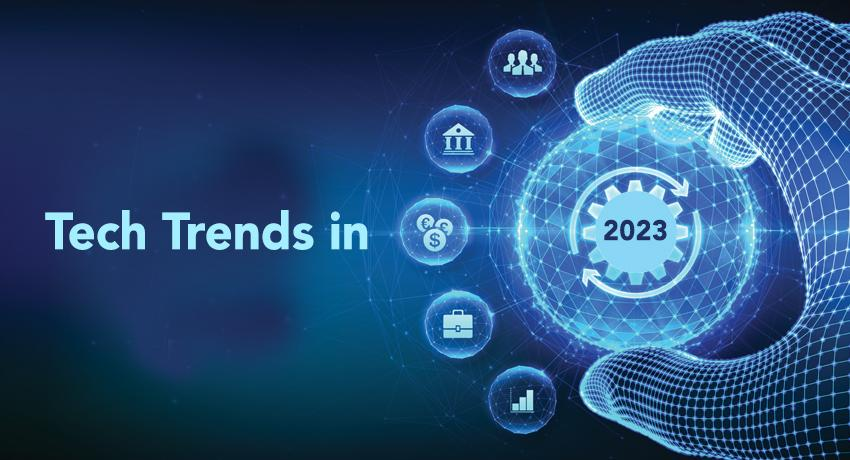Generative AI is rapidly emerging as a transformative force in the financial industry, with the potential to revolutionize operations, enhance efficiency, and deliver tailored experiences to customers. From automating tasks to improving fraud detection and predictive analytics, Gen AI holds great promise. However, its successful integration into the financial sector depends heavily on building trust among stakeholders, including regulators, institutions, employees, and customers. Key Challenges and Considerations As Indian financial institutions explore the potential of Gen AI, several key challenges must be addressed to build trust and ensure its effective integration: Safeguarding sensitive customer data is paramount, and establishing robust data governance frameworks is essential for privacy protection and compliance with regulations like the Indian Data Protection Act. This builds trust, ensuring that data is handled securely. AI models can inherit biases from training data, leading to unfair outcomes. Proactive bias detection and mitigation are crucial to ensure that AI systems produce fair and equitable results, fostering trust among users. Additionally, many AI models are “black boxes,” making it difficult to understand how decisions are made. Investing in explainable AI (XAI) techniques is vital to provide transparency and accountability, allowing users to comprehend and trust AI-driven decisions. AI-driven automation also raises concerns about job displacement. To address this, financial institutions should focus on reskilling and upskilling employees, ensuring a smooth transition to an AI-enhanced future. Finally, establishing ethical guidelines and responsible AI practices is critical. Ensuring AI aligns with societal values and accountability will help institutions deploy the technology in a responsible manner that benefits both businesses and society. Building a Trustworthy Gen AI Ecosystem To successfully integrate Gen AI into finance, institutions must focus on several key actions to create a trustworthy ecosystem. The Indian Fintech Landscape India’s fintech sector has emerged as one of the fastest-growing globally, driven by a young and tech-savvy population, widespread smartphone usage, and a regulatory environment that supports innovation. AI adoption in the Indian fintech sector is accelerating, with companies leveraging machine learning, natural language processing, and computer vision to enhance customer experience, improve fraud detection, and automate financial processes. However, challenges persist, including limited access to financial services for underserved populations, cybersecurity threats, and the need for enhanced financial literacy. The Reserve Bank of India (RBI) has been proactive in encouraging the responsible use of AI, with a focus on data privacy, security, and fairness. The Indian regulatory framework provides a foundation for responsible AI adoption, making it an ideal environment for building a trustworthy Gen AI ecosystem. India’s rapidly growing fintech sector, supported by a forward-thinking regulatory environment, is well-positioned to lead the world in the ethical and responsible adoption of Gen AI. By nurturing a collaborative ecosystem emphasizing human-centric AI and accountable innovation, India’s financial institutions must exercise the transformative power of Gen AI to reshape the future of finance, delivering a more inclusive, efficient, and personalized financial experience for all.
Tag: technology
The Future of Digital Lending: Emerging Technologies and Innovations in India
Digital lending has fundamentally transformed the way financial institutions and borrowers engage in India. Fueled by the widespread adoption of smartphones, increased internet connectivity, and supportive government initiatives aimed at fostering digital financial inclusion, the digital lending sector has experienced remarkable growth. This shift has not only made access to credit more convenient and efficient but has also empowered underserved populations by bridging the gap between traditional banking services and emerging digital solutions. As a result, digital lending is reshaping the financial ecosystem, providing greater financial accessibility to millions of Indians. Current State of Digital Lending in India According to a report by Redseer Strategy Consultants, digital lending in India is projected to account for 5% of all retail loans by FY28, up from 1.8% in FY22. The key drivers of its growth include increasing smartphone penetration, government initiatives like Digital India and UPI, and rising demand for credit among the middle class and underserved segments. A diverse range of players, including banks, NBFCs, and fintech companies, are actively participating in the digital lending space. Emerging Technologies and Innovations Challenges, opportunities and the way forward Despite challenges, digital lending has a bright future in India. By embracing emerging technologies and addressing regulatory concerns, the industry can explore its full potential, driving financial inclusion and significantly contributing to the country’s economic growth. These challenges include ensuring data privacy and security, the establishment of a clear and supportive regulatory framework to foster innovation while protecting consumer interests, and improving financial literacy among borrowers to help them make informed borrowing and repayment decisions. The future of digital lending in India holds immense promise, fueled by these emerging technologies. These innovations are revolutionizing the lending ecosystem, enhancing efficiency, security, and customer experience. By overcoming existing challenges and capitalizing on new opportunities, India is poised to become a global leader in digital lending. This transformation will not only drive financial inclusion but also empower millions of citizens, creating a more accessible and equitable financial landscape for all.
What is Decentralized Finance (DeFi) and how does it work?
Decentralized finance, or DeFi, isn’t just a tweak to the financial system; it’s a seismic shift shaking the very foundations of traditional finance. Imagine a world where financial transactions are not governed by banks or brokerage firms but instead are transparent, accessible, and autonomous. DeFi makes this vision a reality by implementing the power of blockchain technology, creating a borderless financial playground where individuals have full control over their assets. No longer bound by intermediaries, people can dive into a plethora of financial activities, from lending to trading, without needing anyone’s permission. This liberation not only democratizes finance but also sparks a wave of innovation, giving rise to a dazzling array of decentralized applications (dApps) that cater to diverse financial needs. With DeFi, the promise of inclusivity and efficiency is within reach, heralding a new era where anyone, anywhere, can engage in a truly global and decentralized financial system. Application and Usage DeFi leverages advancements in software, hardware, connectivity, security protocols, and peer-to-peer financial networks. Banks and other financial service providers are eliminated by this system. These businesses charge both consumers and businesses for the use of their services, which are essential to the functioning of the current system. By utilizing blockchain technology, such as Ethereum and Binance Smart Chain ecosystem, DeFi can lessen the requirement for these middlemen. Secondly, DeFi platforms are interconnected through standardized protocols and interoperable interfaces, allowing users to seamlessly navigate between different applications and services. This interoperability fosters innovation and liquidity within the DeFi ecosystem. Many DeFi platforms also embrace community-driven governance models, empowering users to participate in protocol decision-making and vote on proposed changes or upgrades. This decentralized governance ensures transparency, accountability, and resilience against centralized control or manipulation. Roadmap and Growth Opportunities The Indian government’s push towards a cashless economy presents significant growth opportunities. The recent approval of the First Loss Default Guarantee (FLDG) underscores the effectiveness of the bank-fintech partnership model in digital lending. According to Statista, the number of users in the Indian DeFi market is expected to reach 6.26 million by the year 2028. This rapid growth underscores the increasing acceptance and integration of DeFi into mainstream financial systems. Globally, the total value locked (TVL) in DeFi protocols has skyrocketed, reaching over $100 billion in 2023, a testament to the sector’s explosive growth. As decentralized finance continues gaining momentum, its potential to redefine the fabric of global finance becomes increasingly evident. Each day, more individuals join this groundbreaking movement, contributing to its growth and evolution. The journey towards a truly decentralized financial system is not without challenges, but the rewards are immense. As we look ahead, the possibilities are boundless, with DeFi poised to democratize access to financial services, drive innovation, and empower individuals worldwide.
How do Robo-advisors in the fintech landscape use AI algorithms?
Robo-advisors are revolutionizing the rapidly evolving fintech landscape by employing AI and Gen AI algorithms to deliver tailored financial guidance to investors. These automated investment platforms utilize sophisticated algorithms and machine learning techniques to assess risk profiles, analyze data, and craft personalized investment strategies that align with each client’s unique objectives and preferences. Unlike traditional financial advisors, robo-advisors leverage AI algorithms to gather and process data on investors’ goals, risk appetite, and financial circumstances, leveraging this information to propose customized investment portfolios. Artificial Intelligence Algorithms Driving Personalization Robo-advisors aid in data aggregation and analysis by collecting information from a variety of sources, such as risk profiles, investment preferences, and financial accounts. Through the processing of this data, AI algorithms can generate customized investment recommendations by gaining insight into the financial situations, goals, and risk appetite of investors. AI systems also help evaluate the risk profiles of investors by looking at variables like age, income, time horizon for investments, and risk appetite. Robo-advisors have fundamentally transformed wealth management by democratizing access to advanced investment strategies that were once limited to affluent investors. Their automated, algorithm-driven approach has resonated strongly with a broad spectrum of investors, driving a significant rise in adoption rates. This surge is fueled by their ability to offer cost-effective, transparent, and personalized financial advice, appealing particularly to tech-savvy millennials and retirees alike. Robo-advisors leverage data analytics and machine learning to maintain remarkably low error rates, continually refining their algorithms based on market trends and user preferences. This self-learning capability not only optimizes investment outcomes over time but also bolsters investor confidence in navigating dynamic markets, ensuring consistent returns, and solidifying their role in modern wealth management strategies. Benefits of AI-Powered Robo-Advisors Robo-advisors excel in managing data related to individual investor preferences, risk appetite, financial goals, and market trends. They gather and analyze data points such as income, age, investment horizon, and desired returns to recommend personalized investment strategies. These strategies typically include a broad range of investments including stocks, bonds, ETFs, and sometimes alternative assets like commodities or real estate investment trusts (REITs). Robo-advisors utilize algorithms to allocate and rebalance portfolios efficiently, aiming to optimize returns while adhering to the client’s risk profile. While they are proficient in data-driven decision-making, robo-advisors complement rather than replace human wealth managers. By handling routine tasks such as portfolio management and asset allocation, they free up wealth managers to focus on more complex financial planning and personalized client interactions. This symbiotic relationship enhances overall service delivery without jeopardizing the role of wealth managers, who continue to provide invaluable expertise and guidance in navigating complex financial landscapes. The Robo-Advisors market in India is projected to witness significant growth in the coming years. According to the Statista report, it is likely to grow at a projected annual growth rate of 9.21% between 2024-2027. Robo-advisors, like Niyogin’s own subsidiary platform InvestDirect https://www.moneyfront.in/ represent a disruptive force, democratizing access to personalized financial advice through AI algorithms. As AI evolves, they will play a pivotal role in shaping investment management’s future, offering personalized solutions catering to individual investors’ diverse needs and preferences. This competitive landscape will propel India’s economic growth, boost job creation, and position the Indian fintech industry as a strong contender in innovation and entrepreneurship.
Technology’s revolutionary power in accelerating financial inclusion in India
Technology has emerged as a transformative force in reshaping India’s financial landscape, particularly in the realm of inclusion. Its revolutionary impact has been profound, breaking down traditional barriers and extending financial services to previously underserved segments of society. This evolution not only fosters economic empowerment but also strengthens the foundation for sustainable development. By leveraging technological advancements, India is witnessing a paradigm shift towards greater financial inclusion, ensuring that all citizens have equitable access to essential financial services and opportunities. Technology as a driving force for financial inclusion India has a fintech adoption rate of 87 percent, which is significantly higher than the global average and illustrates how technology has transformed the financial landscape of the nation. Through the use of mobile banking, digital payment systems, and other fintech innovations, financial services are now more easily accessible and reasonably priced, which lowers transaction costs. The public digital infrastructure facilitated by UIDAI has streamlined the digital shift, enhancing access to online banking services through groundbreaking advancements in identity verification and Know Your Customer (KYC) processes. Complementary efforts such as the Pradhan Mantri Jan Dhan Yojana and the India Stack have notably advanced financial inclusion and fostered fintech adoption in India. These initiatives have not only facilitated the emergence of innovative tech products by fintech startups but have also laid a solid digital groundwork to support both public and private digital endeavors. Especially noteworthy is the substantial benefit extended to marginalized communities. The widespread availability of mobile banking services has sparked a transformative change in rural areas, granting underserved populations convenient access to online banking and credit facilities. This expansion has effectively bridged the rural-urban gap, fueling economic development and mitigating income inequalities. Moreover, it has facilitated easier access to credit services for micro, small, and medium enterprises, thus contributing to the overall growth of the economy. Fostering Equality Through Technological Advancements In the fintech realm, various risks, including cybersecurity threats, regulatory complexities, data privacy concerns, disparities in digital literacy, and issues with customer trust, pose challenges. To sustain growth, all stakeholders must address these challenges thoughtfully while encouraging innovation. Continuous investment in Digital Public Infrastructure (DPI) is crucial to establish a resilient digital environment for fintech transactions and to ensure fair competition. Countries such as Singapore and India have already demonstrated success in deploying DPI through collaborative efforts between the public and private sectors. Another noteworthy development is the recent approval of the First Loss Default Guarantee (FLDG), which underscores the effectiveness of the bank-fintech partnership model in digital lending. With a global count exceeding 400 million, MSMEs underscore the pivotal role of technology in transformation. Technology has revolutionized the way millions of Indians access and manage their finances, speeding up the process of financial inclusion. Even with the tremendous advancements, continued work is essential to improve infrastructure, cybersecurity, and digital literacy. Taking care of these issues will allow India to enhance its ongoing efforts to promote innovation and partnership among stakeholders, paving the way for a more accessible and prosperous future through initiatives aimed at enhancing financial inclusion.
Robo-Advisors vs. Human Advisors: Finding the Right Balance for Your Financial Future
In the ever-changing landscape of financial advising and investment management, two separate techniques have arisen as rivals for the title of the most effective and efficient means of managing your wealth: Robo-advisors and Human advisors. Both have their unique strengths and weaknesses and choosing the right option can significantly impact your financial well-being. Understanding Robo-Advisors The algorithms of Robo-advisors are based on modern portfolio theory and diversified asset allocation methodologies, making them an efficient and low-cost solution. Here are some of the primary benefits of Robo-advisors Cost-effective: Robo-advisors frequently offer more economical fees than traditional human advisors, making them a cost-effective option for investors. Accessibility: They are available 24 hours a day, seven days a week, allowing you to monitor your investments and make changes at any time. Diversification: Robo-advisors develop diversified portfolios based on data-driven insights, lowering risks and optimizing returns. Impartiality: Robo-advisors make investing judgments based on data rather than emotion. However, Robo-Advisors have limitations: Lack of Personalization: They may not evaluate your specific financial circumstances, goals, and risk tolerance as thoroughly as human consultants. Limited Human Interaction: Robo-advisors can be impersonal and lack the personal touch of people who appreciate human engagement. Understanding Human advisors Human advisors, on the other hand, are skilled experts who give personalized financial advice and investment management. They have the following benefits: Personal Guidance: Human advisors adapt their recommendations to your individual financial goals, risk tolerance, and life circumstances. Emotional Support: They can provide emotional support amid market volatility and assist you in being disciplined in your financial strategy. Financial Planning: Human advisors provide comprehensive financial planning services such as tax preparation, estate planning, and retirement planning. Adaptability: They can respond quickly to shifting market conditions and alter your investing strategy accordingly. Human advisors, on the other hand, also have a few drawbacks: Higher Fees: Their services are frequently more expensive, and fees may be a portion of your assets under management. Bias: Some human advisors may have conflicts of interest, resulting in suggestions that benefit them more than their clients. How to find the right balance between these two? The decision between robot advisors and human advisors is not binary. Many investors believe that a hybrid approach is the best solution. Here are some things to keep in mind: Your financial objectives: A Robo-Advisor may be sufficient if you have simple investment demands and long-term ambitions. If your financial position is more complicated, a human advisor can provide tailored advice. Risk Tolerance: If you are risk averse and want guidance during volatile markets, a human advisor’s emotional support may be invaluable. Cost: Consider your financial situation. Robo-advisors are less expensive, whereas human advisors provide a more thorough but more expensive service. Time: Consider how much time you can devote to managing your money. Robo-advisors demand less direct supervision. Finally, a balanced approach that integrates both digital automation and human experience may deliver the best of both worlds. You can make an informed selection that is in line with your financial future if you understand the benefits and drawbacks of each option. The goal is to focus on what will best suit your needs and financial well-being in the long run.
Modern Age Fintech Products Are Gaining Traction
Modern-day fintech solutions have seen a phenomenal rise in popularity and usage in recent years. These cutting-edge financial solutions are revolutionizing the way individuals and organizations handle their finances. Several significant elements are responsible for fintech’s quick growth: Fintech is increasingly accessible to people of all ages. Fintech apps that aid money management and investment are popular among Generation Z. Millennials are tech-savvy, and they are rapidly becoming interested in financial goods. Boomers are learning to use mobile apps as well, but they prefer the safer financial products they are accustomed to. Neobanks’ hyper-personalized products In 2022, Indian neobanks’ funding increased fivefold. Its investments are estimated to total $215 billion by 2023. Neobanks are popular among Gen Z workers who have recently entered the labour sector. They prefer individualized financial solutions that are both innovative and rewarding. Traditional banks are also considering Neobank agreements to provide hyper-personalized goods. AI-Based Digital lending The Buy Now, Pay Later trend is gaining traction because it offers a much better alternative to the elusive credit card. Digital loans are rapidly expanding, with more than $9 billion invested in the last five years. Banks can increase their reach thanks to AI-based credit evaluation and assessment technology. As financial inclusion becomes more viable, financial institutions will be able to attract more consumers. To accommodate rising credit demand, the banking sector is swiftly innovating, but the shift must be approached with caution and proper capital buffers. New-Age Wealth Tech Digital banking is dramatically disrupting investment products in India. Baby boomers preferred to invest in physical assets. Gen Z now wishes to gain more from financial markets by utilizing digital payments. The number of active Demat accounts climbed by 63% in 2022, reaching 89.7 million. These cutting-edge tools streamline investment options by allowing access to mutual funds, peer-to-peer investing, equities, and everything else. Again, AI-based investing recommendations ensure that the younger generation can invest like an expert without having to acquire all the jargon. Alternate Funding Platforms Instead of relying on traditional banks and investments, startups are now seeking fresh and innovative finance methods. Crowdfunding platforms enable individuals to collect funds to address their financial requirements. Many banks, too, are active in crowdsourcing. Small businesses and start-ups that have obstacles with traditional finance methods prefer to use these crowdfunding solutions. Asset and Portfolio Management using Robo Advisors Asset and portfolio management with robo-advisors is predicted to grow at a CAGR of 22.11% from 2023 to 2027. The number of users will exceed 44.949 million. The COVID-19 pandemic impacts are responsible for the huge increase in robo-advisors. They manage a user’s portfolio by assessing their financial condition, future goals, level of risk, and other preferences. Leading financial institutions are collaborating with AI firms to develop powerful robo-advisors that can eliminate the need for human participation. Depending on their demands, the user can select fund-based, equity-based, or overall wealth advisory. Modern-day fintech products are clearly altering the financial environment as they gain traction. Their ability to fill existing gaps in traditional financial services, along with their capacity for ongoing innovation, places them at the vanguard of the changing way we handle, access, and interact with our money.
Challenges Faced by Fintech Companies Adopting AI
Artificial intelligence has emerged as a game changer in the fintech business, with enormous potential to transform operations, improve client experiences, and drive innovation. However, despite its promised benefits, fintech organizations confront a number of hurdles in properly implementing AI. Data Quality and Availability One of the key issues that fintechs encounter when using AI is data availability and quality. To train efficiently, AI models require massive amounts of accurate, relevant, and diverse data. Fintech startups, on the other hand, frequently deal with data fragmentation, outdated systems, and data silos. Furthermore, obtaining high-quality data from reliable sources can be expensive and time-consuming. Regulatory Compliance Fintech firms operate in a highly regulated environment and must adhere to severe regulatory requirements. The adoption of AI brings new challenges because AI models frequently operate as black boxes, making it difficult to explain the judgments they make. Transparency, justice, and accountability are all required by regulatory agencies in AI systems, generating issues about regulatory compliance. Talent Acquisition and Skill Gap AI implementation necessitates a skilled workforce capable of designing, deploying, and managing AI systems. However, due to tough competition and high demand, fintech organizations frequently experience issues in hiring and maintaining elite AI expertise. Furthermore, there may be a considerable talent gap among existing teams, restricting their ability to properly embrace and exploit AI technologies. Ethical and Bias Concerns AI systems are only as good as the data they are trained on. Biases in training data can lead to biased results, raising ethical concerns and the possibility of discrimination. Fintech firms must solve these concerns in order to provide fair and unbiased AI applications. Solutions: Companies in the financial technology sector must invest in data infrastructure and governance. They must establish strong data management practices, ensure data cleanliness, and devise strategies for integrating and consolidating data from several sources. Collaborations with data providers and the use of third-party data sources can also aid in overcoming data availability issues. Fintech companies should take a proactive approach to regulatory compliance by collaborating closely with regulators to identify and address their issues. They should create explainable AI models and guarantee transparency in decision-making processes. Collaborating with RegTech firms can provide essential tools and solutions for effectively navigating the regulatory landscape. Fintech companies might invest in upskilling their existing personnel through training programs and partnerships with educational institutions. Collaboration with AI start-ups and research organizations, as well as using consulting services, can help overcome the talent gap. Building a diversified team with experience in data science, machine learning, and domain knowledge is critical for effective AI adoption. Fintech firms should put comprehensive systems in place to identify and eliminate bias in AI models. They should undertake regular audits and testing to determine the fairness and ethical implications of their AI systems. Implementing diverse and inclusive data collection practices and involving multidisciplinary teams in AI development might help handle bias concerns successfully. Despite the hurdles, the deployment of AI provides enormous opportunities for fintech companies to revolutionize the financial system. Fintech start-ups can overcome these obstacles by tackling concerns such as data quality, regulatory compliance, talent acquisition, and ethical considerations. Strategic investments in data infrastructure, coordination with regulators, workforce upskilling, and implementing ethical AI practices will be critical to successfully embracing AI and realizing its full potential in the fintech sector.
Hyperautomation through AI and ML
Hyperautomation in the financial domain refers to the integration of artificial intelligence (AI), machine learning (ML) and robotic process automation (RPA) to automate complex business processes, reduce manual interventions and improve operational efficiency. It has become critical to everyday operational activities. AI and ML are critical components of hyperautomation because they enable automation tools to learn from data and improve over time. With AI and ML, hyperautomation can process large volumes of data, identify patterns, and make predictions based on that data. This allows organizations to automate a wide range of tasks and processes, including decision-making, data analysis, and customer service. One of the key benefits of hyperautomation is that it can help organizations improve their efficiency and reduce costs. By automating repetitive and time-consuming tasks, hyperautomation frees up employees to focus on more strategic work. Additionally, hyperautomation can help organizations make better decisions by providing real-time data and insights. Components of Hyperautomation Let’s have a look at some of the altering hyperautomation processes that the financial domain has adopted – Account Opening and KYC (Know Your Customer) Hyperautomation has automated the entire account opening process including identity verification, credit checks, document processing, etc. The cherry on the cake is its ability to identify fraudulent applications and reduce the risk of financial crime. Hyperautomation has furthered this progress and today we also experience the ease of e-KYC where the entire journey along with the facial verification takes place online. Loan Processing The lending process was always considered a cumbersome process regardless of the amount of money one wanted to borrow. However, with hyperautomation, the process has not only become simpler but the disbursals have become quicker too. The redesigning of the loan processing cycle, loan application verification, eligibility checks, credit scoring, documentation, etc. has allowed banks and NBFCs to reduce their disbursal duration drastically since it eliminated several manual processes. This has additionally helped financial institutions better customer experience too. Risk Management Lenders have always been in the high-risk zone inspite of designing risk-averse strategies for themselves. With the introduction of hyperautomation, the scenario has changed for lenders. Artificial Intelligence (AI) and Machine Learning (ML) now analyze vast amounts of data to identify potential risks and provide insights to decision-makers. Moreover, it has also enabled real-time monitoring of risks allowing businesses to quickly respond to threats, fraudulent activities, changing market conditions and regulatory requirements. Customer Service Customer Experience (CX) has become an integral part of customer service. Experience is directly proportional to retaining a customer. With chatbots and voice assistants handling customer queries and grievances 24×7, services have become more personalized inspite of the reduction of personal touch. The Gen-Z prefers customization and personalization over personal touch and therefore, hyperautomation has been on the boom. To form an opinion, hyperautomation in the financial domain has the potential to transform the industry by reducing operational costs, improving accuracy, and enhancing customer experiences. It can also enable financial institutions to stay competitive by adopting the latest technologies and staying ahead of regulatory changes.
Technology’s Role in Financial Inclusion
The start of the ‘technology era’ was a turning point for human evolution. The invention of ‘the wheel’ was the beginning of one of the most important eras of humankind. Over the years, technology along with its surroundings has evolved manifold and today, it is upholding several aspects that humankind as a society is striving to achieve. One very critical element in modern times is financial accessibility and inclusion. Technology plays a critical role in advancing financial accessibility and inclusion, which refers to the access and use of affordable and appropriate financial products and services by all segments of society, particularly those who are underserved or excluded from the traditional financial system. Tech elements that have furthered financial inclusion Digital payments refer to access to traditional banking services to make and receive payments. Digital payment has offered safe, convenient and cost-effective ways to conduct financial transactions, including remittances, bill payments, and peer-to-peer transfers, without needing a physical bank account. Digital payments have witnessed more than 200% growth in digital payment volume since FY18-19. Total transaction value is expected to show an annual growth rate of 15.56% resulting in a projected total amount of US $ 321.70 Bn by 2027. It is not only building a payments structure for Urban India but also for the Rural market. As per World Economic Forum, the Digitalization of small and medium businesses could add anywhere between $158-216 billion to India’s GDP by 2024. Technology has made it possible for individuals to access basic banking services through online and mobile banking and platforms. It has allowed individuals to check their account balance, make transfers, pay bills and even apply for loans, insurance and other financial services online, eliminating the need for physical visits to brick-and-mortar banks. The number of mobile banking payments across India in the fiscal year 2019 accounted for approximately 6.2 billion. This was a tremendous increase compared to the previous fiscal year. For instance, to further the use of online and mobile banking, SEWA – the largest trade union in India has trained 4,00,000 women in digital payment methods. Technology has facilitated the use of big data and alternative credit scoring models, which can assess the creditworthiness of individuals who lack a formal credit history. This enables financial institutions to extend credit to those who were previously excluded due to a lack of credit history, thereby promoting financial inclusion. Today, owing to this, 63 million underserved MSMEs in India are served with a range of customized financial services. Technology has made financial education and literacy more accessible to underserved populations through online resources, mobile apps, and educational content. This empowers individuals with knowledge about financial products, services, and best practices, enabling them to make informed financial decisions and manage their money effectively. With a rural population of 900 million, the SECC measured that 23.5% of rural households have no adults above the age of 25 who were literate. Illiteracy bars the population in question from accessing financial services since they are unable to open a basic bank account. However, to challenge this issue, biometric identification was introduced which enabled the illiterate population to open and access bank accounts with the help of their fingertips. For instance, AePS; individuals can withdraw money or enquire about their bank balance with their fingertips. This has proven to be helpful for a number of individuals and has allowed them to be included in the financial realm. Overall, technology has the potential to democratize access to financial services, reach underserved populations, and promote financial inclusion. However, it is important to ensure that technology is implemented in a responsible and inclusive manner, taking into account issues such as data privacy, cybersecurity, and digital literacy to ensure that the benefits of technology are shared widely across all segments of society.
Tech Trends in 2023
The Information Age, alternatively known as the Computer Age, Digital Age, Silicon Age or New Media Age, is a mid-20th century period that is characterized by a shift from traditional industries to an economy being built on information technology. As of the current date of 2023, information technology has become an invaluable part of every industry we know of. It has reimagined entire business designs, models and processes therein. Let’s have a look at some compelling tech trends that have engulfed our interest. Extended Reality (XR) XR is a combination of virtual and augmented reality to create immersive experiences. It is being used in several fields such as education, gaming, healthcare, etc. However, it is re-envisioning the financial sector. XR is being used for purposes such as training, visualization, customer engagement, risk management, etc. For instance, XR can be used to visualize financial models in 3D allowing analysts to gauge relationships between different variables. Or, banks can use ER to create virtual tellers and access financial information and services. To list down, XR has several usages in the financial sector, transforming its functionality. Quantum Computing The development of quantum computers, which use quantum bits (qubits) instead of classical bits, has the potential to revolutionize industries such as finance, healthcare, and transportation. Speaking about the financial sector, quantum computing can enable financial institutions to perform complex organization calculations which can lead to better portfolio management and risk diversification for investment companies. It is also swift in undermining risk factors in real-time which allows companies to develop a better risk-averse model. Internet of Behaviours (IoB) The IoB is a concept that refers to the collection and analysis of data from various sources such as social media, mobile devices, and wearable technology to gain insights into people’s behaviours and preferences. This technology is a big gain for the financial sector as it contributes heavily to predictive analysis and consumer insights. Given that the financial sector is reimagining its approach and turning customer-centric, IoB ensures its vision meets reality. Autonomous Systems Autonomous systems such as AI and ML have a significant impact in several fields, especially the financial sector. Ranging from fraud detection, consumer insights and experience, trading and risk assessment to compliance, AI and ML contribute to every bit. For instance, the development of chatbots with the help of AI has allowed financial institutions to understand and resolve consumer grievances/preferences almost in real-time. This ensures an enhanced customer experience (CX). Blockchain As we know, blockchain is a decentralized, distributed ledger technology that provides a secure and transparent way of storing and sharing information. Means, it benefits the finance industry in numerous ways, especially in handling critical functions like payments, settlements, asset management, etc. With the help of blockchain, financial institutions can structure and implement better, more secure and quicker services with much lower costs. Edge Computing Edge computing refers to the processing and analyzing of data at or near the source, rather than sending it to a centralized data center. In the financial sector, edge computing can help to improve operational efficiency, reduce costs, and enhance customer experience. For example, edge computing enables financial institutions to process and analyze their data real-time leading them to make quicker and better-informed decisions thereby reducing their risk quotient. We understand that technology is ever-evolving and with each passing phase, we will experience a new revolution however today, these trends are making a visible mark in several domains, especially the financial sector.


